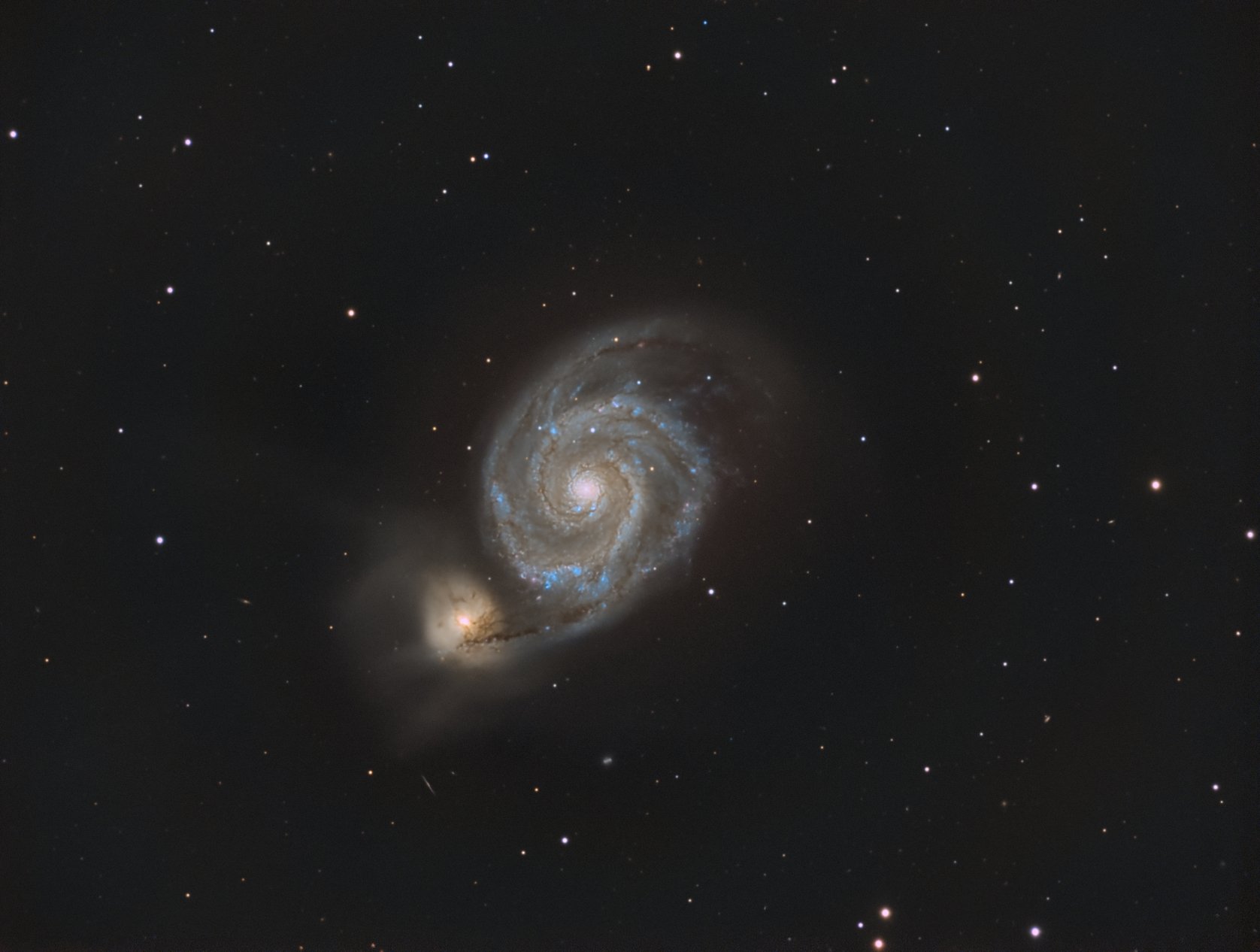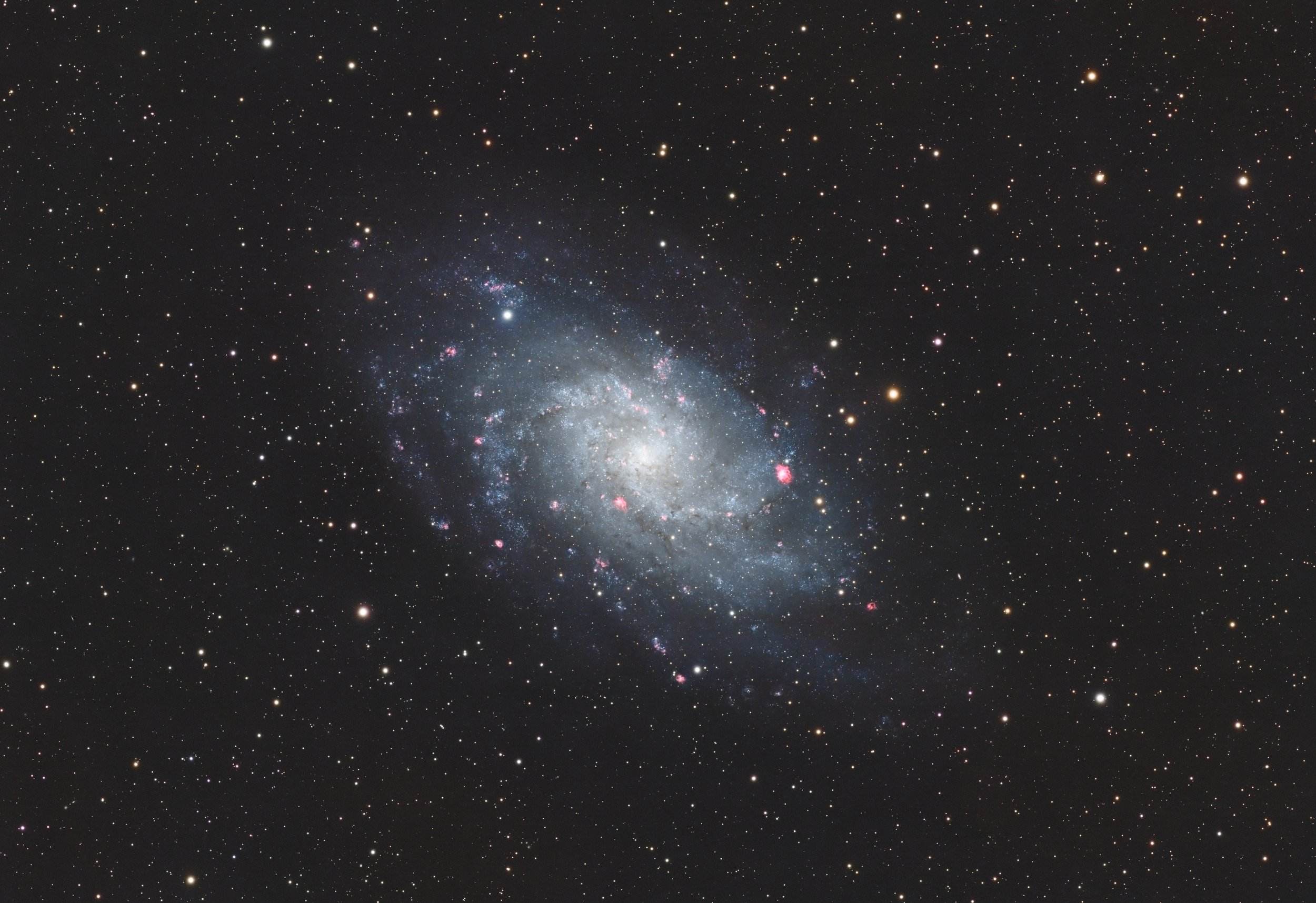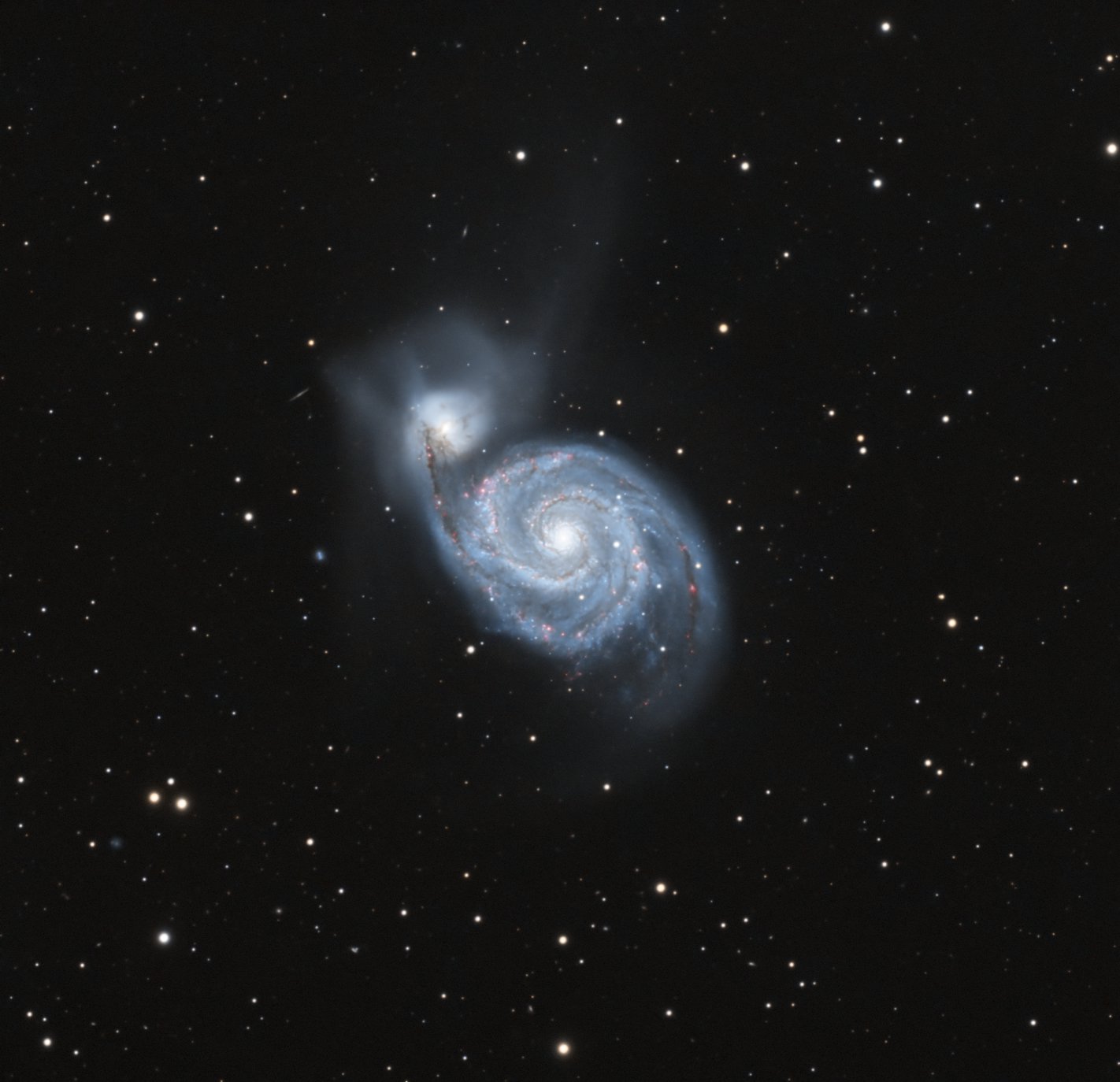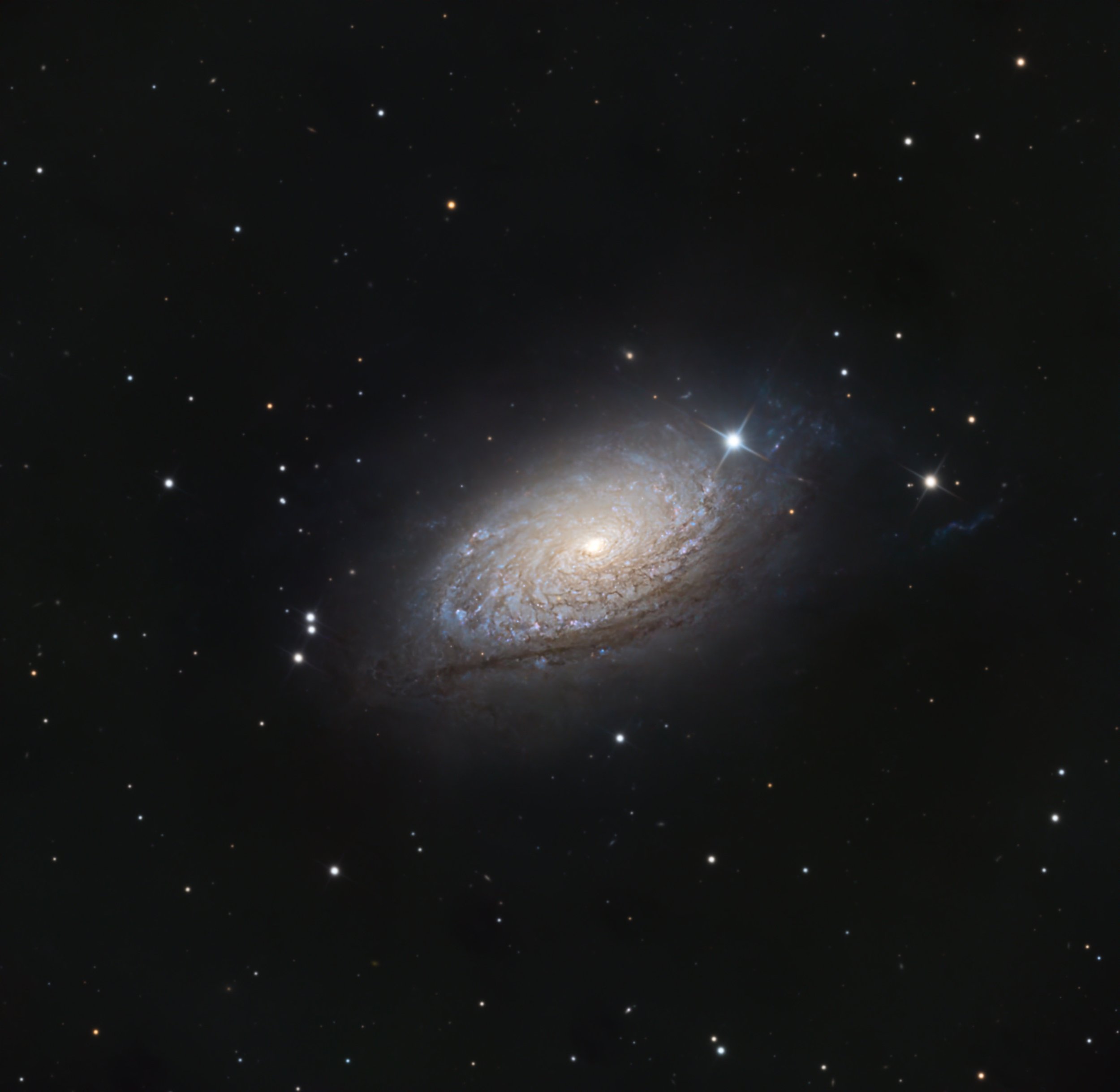M101 – The Pinwheel Galaxy in LRGB with Ha: A Four-Night Journey Across Two Skies

Over the course of four nights this April, I set my sights on one of the great face-on spiral galaxies in our night sky—Messier 101, also known as the Pinwheel Galaxy. This LRGB + Ha image is the result of serious time, patience, and a little bit of stubbornness in the face of light pollution.
The Gear and Setup
Camera: ZWO ASI 2600MM Duo
Filters: Baader LRGB + Ha
Scope: Carbon Star 150mm f/3.8 Newtonian
Mount: [Insert your mount if you'd like]
Data Acquisition
Total Imaging Time: 17 Hours
Luminance: 5 hours (a combination of 120s and 300s subs, blended via PixelMath)
RGB: 4 hours
H-alpha: 8 hours
Location Breakdown
Harold Campbell Dark Site (Bortle 4–5)
Two nights were spent gathering clean Luminance and RGB data. The darker skies helped resolve M101’s delicate spiral arms and subtle outer structure.My Backyard in Davie, FL (Bortle 7–8)
Despite the heavy light pollution, I captured all the Ha data over three nights. The ZWO 2600 Duo and fast f/3.8 optics worked hard here—and Ha really punched through the muck to spotlight star-forming regions.
Processing in PixInsight
I took a hybrid approach to luminance: two master L files—one from 120s subs and one from 300s—were combined using PixelMath to balance dynamic range and detail. The shorter exposures preserved core detail, while the longer ones pulled out fainter structures in the arms.
I also used a suite of powerful scripts and tools:
SPCC for photometric color calibration
BlurXTerminator and NoiseXTerminator for clarity and control
StarXTerminator to manage star layers cleanly
PixelMath for blending and luminance master
The H-alpha data was subtly integrated into the red channel and also mixed into the luminance layer to highlight M101’s HII regions without oversaturation.
Final Thoughts
M101 rewards patience. Its intricate structure is a dream to capture and a challenge to process, especially across such a wide range of conditions. Combining data from different sites, exposure times, and spectral bands gave me a final result that feels both clean and alive.
If you’ve shot M101 before, or plan to, drop a comment or a link—I’d love to compare approaches.
Clear skies,
Charles
I’ve been a dedicated to Squarespace fan for 20 years. Love the product, people and company.





